Agusta-Bell 102 - History and technical description
Some historical notes
On February 3, 1959, while the prototype of the Agusta-Bell 102 helicopter made its first test flights on the airfield of Cascina Costa (piloted by the famous test pilot Ottorino Lancia), the Bell 204, its direct competitor, (produced at that time in Italy as the Agusta-Bell 204) was already in production in the United States! Needless to say, this model was already old when it appeared, and it was destined, as it happened with its American homonym, to be rapidly abandoned and forgotten.
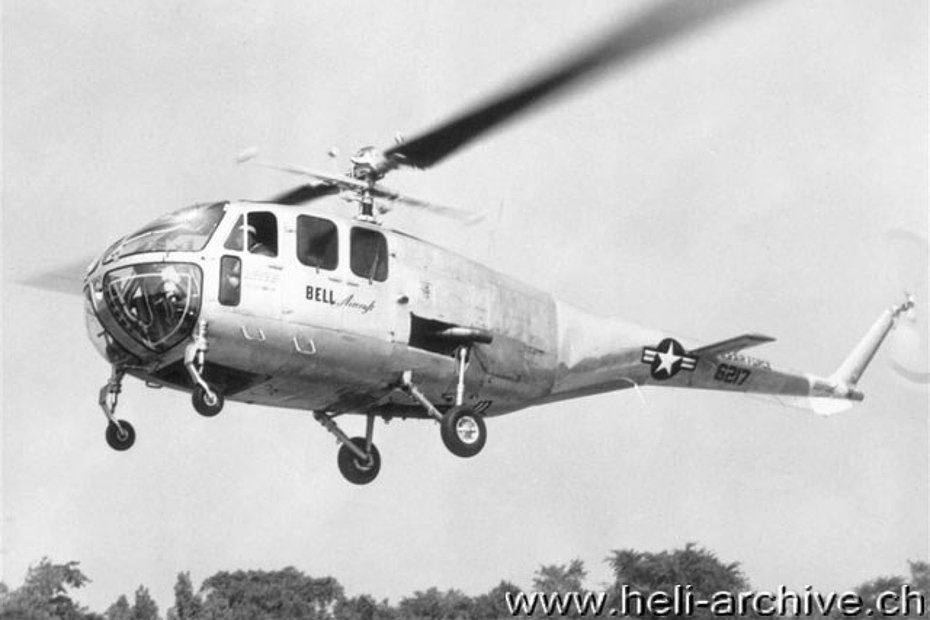
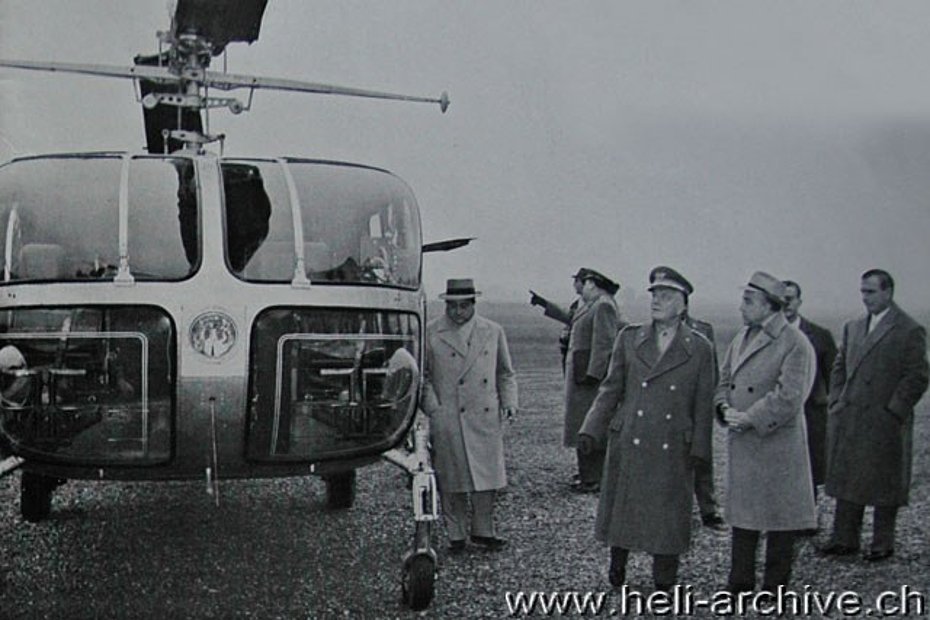
In January 1946 the United States Air Force (USAF) signed a contract with Bell to a produce in series a new model known with the USAF designation R-12A (Bell designation was Model 48). This order was cancelled but in the meantime the USAF asked Bell to develop a larger machine able to carry up to ten occupants (pilot, co-pilot and 8 soldiers). The new model, known as the Bell Model 48A (the latest USAF designation was YH-12B), was produced in ten units.
The YH-12B was the first Bell developed as a troop carrier, and can be considered the forerunner of the present assault helicopters. Unfortunately the prototype had some serious problems with the main rotor system. These problems were solved but in the meantime the USAF focused its interest on another model. From 1948 on the few Bell 48 and 48A helicopters produced were used by the USAF for a series of tests, and much later they were withdrawn from use.
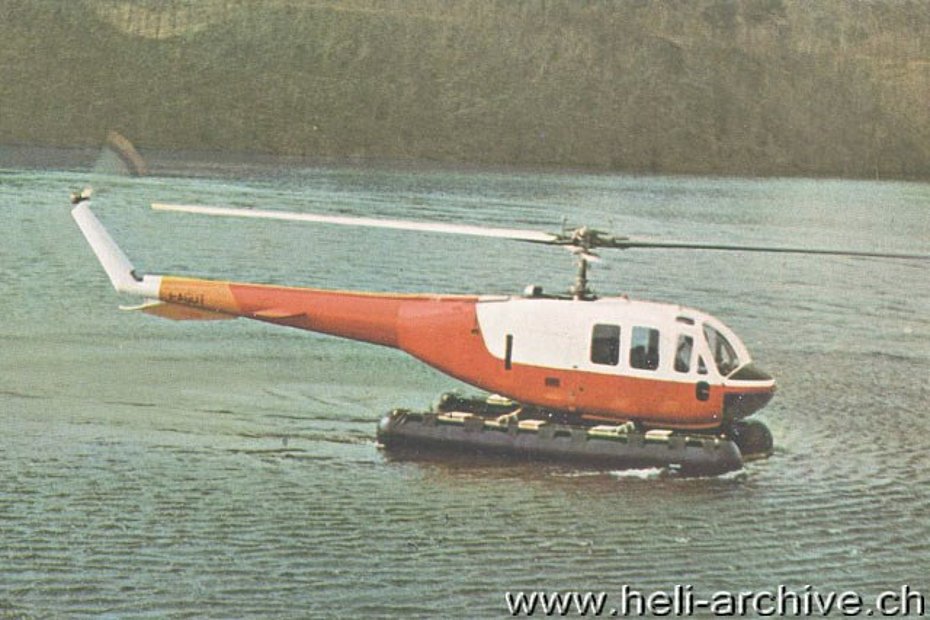
The Italian technicians redesigned a new fuselage around the mechanic of this helicopter. This new fuselage was the result of an intensive study intended to obtain the best aerodynamic characteristics compatible with an optimum configuration for utility and service. The result was a ten seats machine (one pilot and up to nine passengers) with a large baggage compartment.
The helicopter had the classic Bell two blades rotor with stabilizer bar. It was powered by a radial engine placed behind the cabin. The first test flights of the prototype I-AGUT were attended by the presidents of the Bell Aircraft of Buffalo and the Bell Helicopter of Fort Worth. In fact Bell not only offered its helicopter (and probably many mechanical parts), but also assisted the Italian company during the development of the prototype. In April 1959 the helicopter started a long series of trials aiming for the certification.
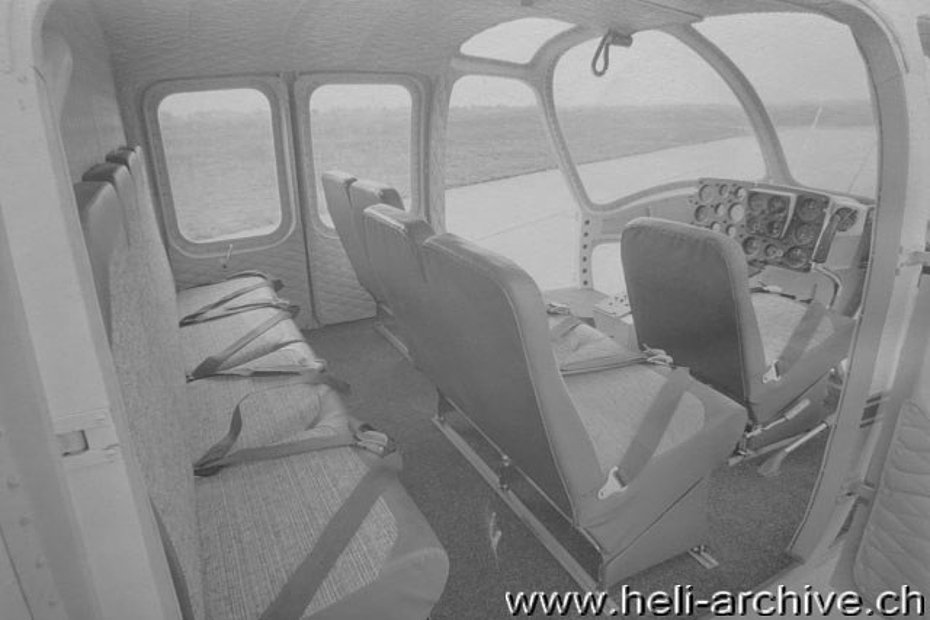
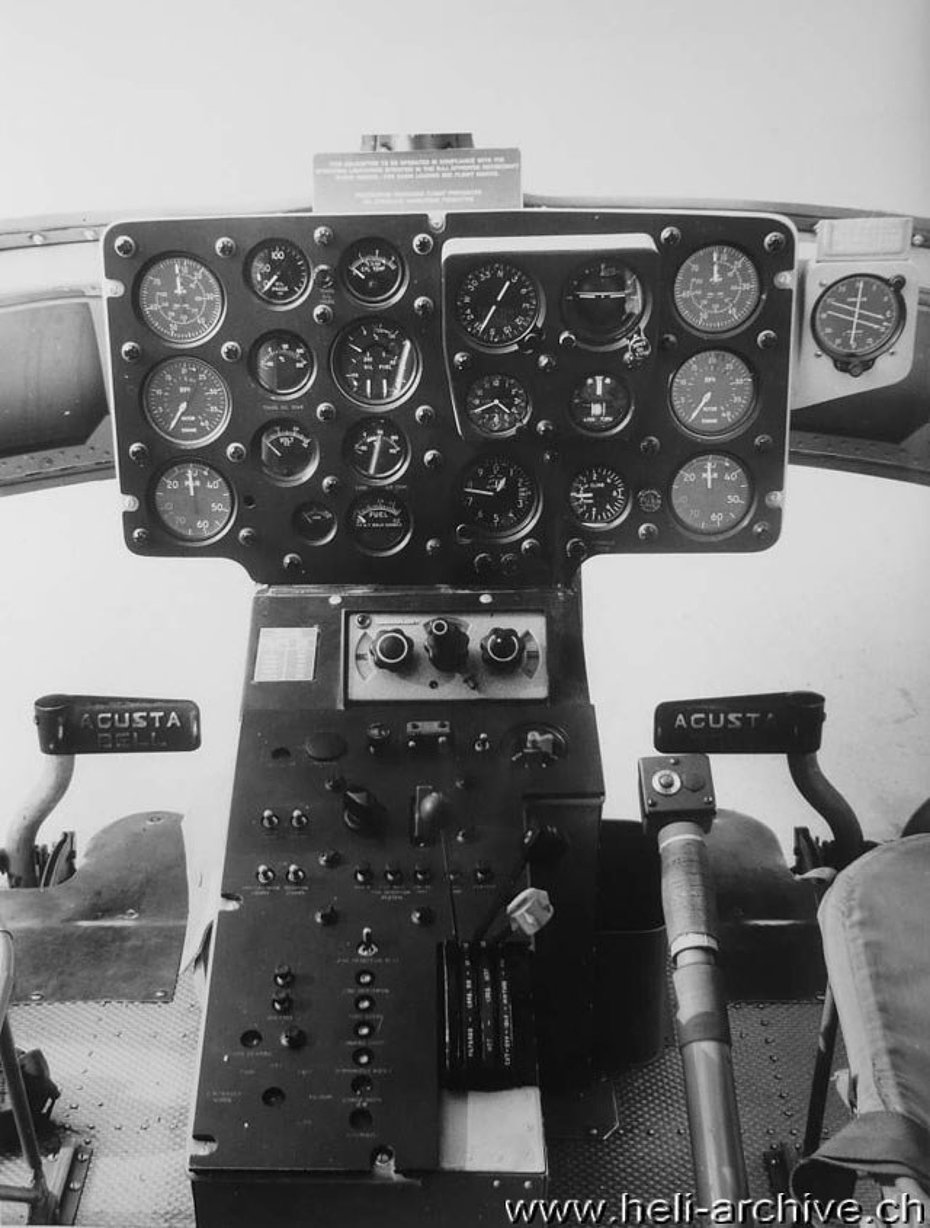
The I-AGUT was presented during the 23rd Paris-Le Bourget Air Show which was organised between June 12-21, 1959. The test flights were completed the following year.
On May 12, 1960 the Agusta-Bell 102 became the first Italian helicopter to obtain the certification from the “Registro Aeronautico Italiano” (RAI). On August 18, 1960, in the United States, the Civil Aeronautics Administration (CAA) issued the Type Certificate 7H3 to the Agusta. In the same year, despite the fact that it had already signed the contract for the production of the Model 204, Agusta decided to produce in series the Agusta-Bell 102.
Altogether very few units were manufactured (probably five, but it is not possible to find precise information). Besides the prototype I-AGUT (s/n 002) the HB-XAY (s/n 003), I-ECIN (s/n 004) and the I-ESEI (s/n 005) were produced. The last two were briefly used by the Italian company Elivie for the transportation of passengers before being withdrawn from service. Agusta-Bell 102’s career, as aforementioned, was prematurely interrupted with the introduction on the market of the modern Agusta-Bell 204, which obtained a great commercial success. Despite the fact that it was produced in only a few units, at least two AB-102 somehow "survived". The prototype I-AGUT along with the Bell 48A 46-217 are now stored near Agusta's museum, and the I-ECIN is stored in the “Museo Storico dell'Aeronautica Militare” in Vigna di Valle, near Bracciano (Rome).
Civil employ
The few civil Agusta-Bell 102 manufactured were mainly used for the commercial transportation of passengers by the Italian company Elivie.
Technical description
The Agusta-Bell 102 was a multi-mission helicopter of classical configuration. Depending on its employ it could transport up to nine passengers placed on three files (4-4-1), four litters with one attendant or a suspended load up to 750 kg. The access to the passengers’ cabin, which had a volume of 5.4 m3 and a width of 220 cm, was possible through two large (135 cm x 120 cm) removable doors on each side. The pilot and the co-pilot had each their own door to access the cockpit. The cabin’s layout permitted direct communications between the crew and the passengers.
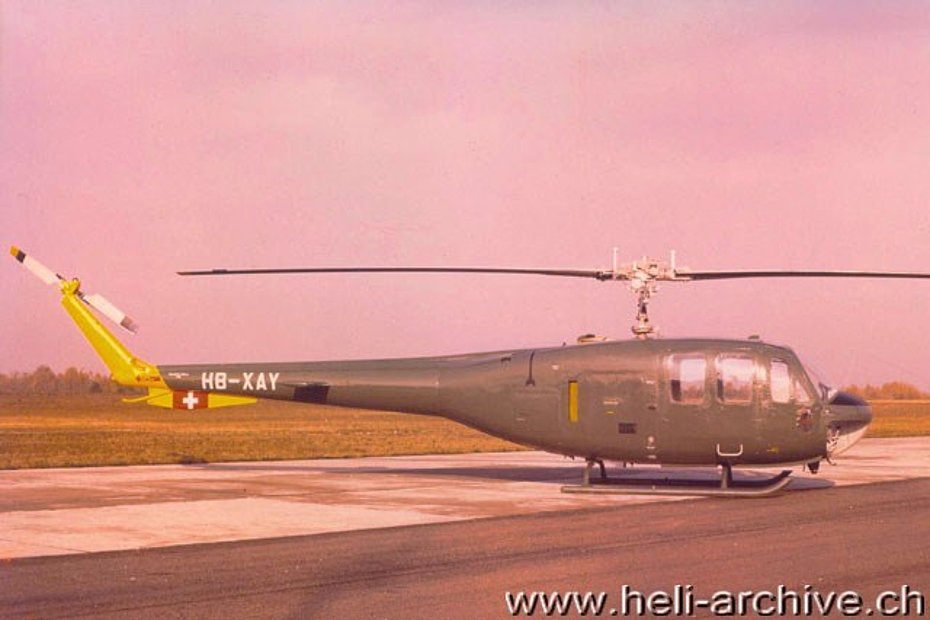
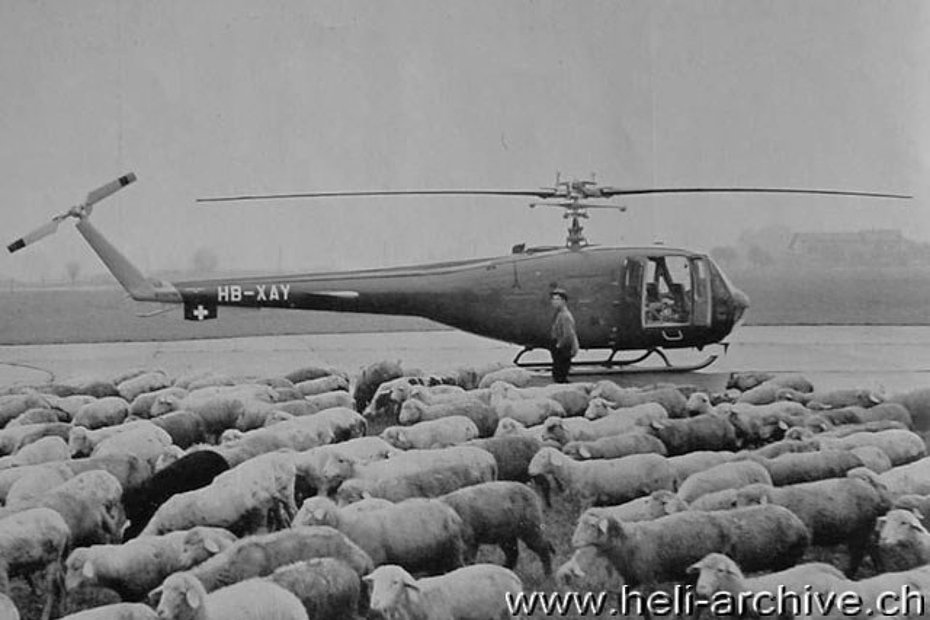
This was particularly important for a helicopter which could be employed for search and rescue missions. The large windshield and windows provided excellent visibility in all directions. The fuselage had a wide baggage compartment where it was possible, in compliance with the weight and balance diagram, to load up to 200 kg. The engine and accessories were easily accessible through two compartment doors, one located on each side of the fuselage. The engine compartment was isolated from the cabin by a fire wall made of titanium plates. The single fuel tank, with a capacity of 380 litres, was located directly below and to the rear of the cabin floor. The oil tank had a capacity of 30 litres. All the flight controls but the pedals were hydraulically boosted. The electrical system consisted essentially in one battery of 24 V – 24 Ah (placed in the front of the cabin) with a 50A generator. The external electrical socket was placed just underneath the pilot access door. The helicopter had a conventional skid landing gear, but if necessary it could be fitted with pontoons for amphibian operations. It also had a horizontal stabilizer and a small vertical fin in the rear section of the fuselage. The transmission was placed behind the cabin. Attached to the engine driveshaft there was the centrifugal clutch which allowed easy engine starting and smooth acceleration of the rotor. The clutch was fully engaged at approximately 1'200 rpm. The helicopter was powered by a nine cylinders supercharged Pratt & Whitney Wasp R-1340 S1H4 radial engine installed vertically. The engine had a maximum take off power (limited to 5 min) of 448/600 kW/hp at 2'250 rpm 36.5” Hg. The compressor provided full take off power up to an altitude of about 1'890 metres, thereby giving the helicopter good performances in mountainous regions.
Performances
In standard atmospheric conditions, at its maximum takeoff weight of 2’725 kg, the helicopter had a maximum cruising speed of 160 km/h, while the never exceed speed at sea level was 177 km/h. Its service ceiling was 4'270 meters. With a 2'360 kg takeoff weight, and with a temperature of 15°C, the initial rate of climb at 96 km/h was 342 m/min. In the same flying conditions the helicopter could hover in ground effect up to 3’660 meters, or respectively 2'620 meters out of ground effect. The Agusta-Bell 102 took about 3 minutes to reach the altitude of 1'000 meters. With an average hourly fuel consumption of 105-115 litres, its range was 400-420 km, corresponding to 3h20’ of flight endurance.
Dimensions, weights and payload
The Agusta-Bell 102 had a main rotor diameter of 14.47 m (rotor disc area 165 m2), while its tail rotor had a diameter of 2.59 m (rotor disc area 5.26 m2). The fuselage had a length of 12.77 m. The helicopter had a maximum height of 3.42 m. The empty weight of the aircraft fitted with a skid landing gear was 1'810 kg, while its maximum takeoff weight for civil use was 2'725 kg. Deduced the standard weight of the pilot (77 kg) and with a fuel and oil reserve for one hour of flight (90 kg) its payload was about 750 kg. For military uses the MTOW could be increased up to 3'025 kg.
Rotor and engine limitations
During normal flight operations (power on) the rotor rpm must be kept among 260 and 279. The engine rpm must be kept between 2'100 and 2'150. Maximum cylinders head temperature 260°C.
Autorotation
For the correct execution of the autorotation the pilot had to keep a speed of 96 km/h, while the rotor's rpm had to be kept between 260 and 297. The flare must be executed at an altitude of about 8 metres from the ground.
Accessories
The helicopter could be fitted with the following accessories: dual controls, floats for amphibious operations, electric hoist, stretchers and medical equipment kit, night flying lights (including search lights), blind flying instruments, external cargo hook, rotor brake, a 280 litres auxiliary fuel tank which could be installed in the baggage compartment, cabin fire extinguisher, radio installation and cabin heater system.
The Agusta-Bell 102 in Switzerland
On the 31st of October 1960 one of the very few Agusta-Bell 102 manufactured was inscribed in the Swiss aircraft register and received the registration HB-XAY. The aircraft concerned was the s/n 003 built that same year. It was acquired by the CODIC company (Compagnie pour le developpment industriel et commercial) in Geneva, managed by Mr. Balzer.
The helicopter was purchased through the Forrer-Fenwick in Zürich, the official representative of Bell and Agusta-Bell in Switzerland. It is very probable that the HB-XAY made a single test flight in Switzerland. On October 28, 1960 this aircraft landed at the airport of Locarno/TI for an official inspection of the OFAC's representatives, the engineers Peyer and Rupp. The helicopter, at that moment, had logged only 11 hours of flight and was equipped for the transportation of seven passengers. After the inspection the helicopter flew back to Cascina Costa where it awaited its sale.
On December 27, 1960 this aircraft was in fact registered in Morocco as CN-MAQ after being sold through the CODIC to Morocco's Ambassador in London Prince Mouley Hassan Ben El Mehdi. On October 27,1961 the OFAC was informed of the selling, and on November 23, 1961 the HB-XAY was definitively cancelled from the Swiss aircraft register. From that moment on the tracks of this aircraft were lost.
HAB 08/2010

